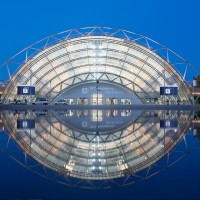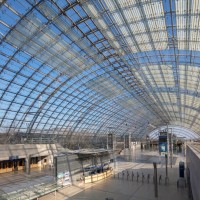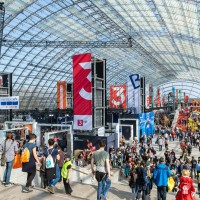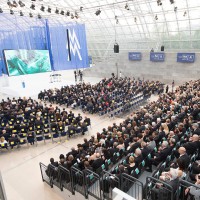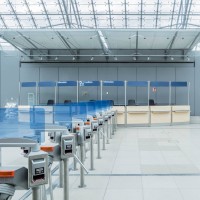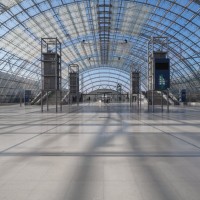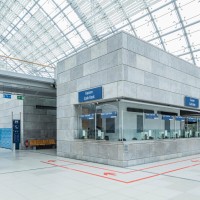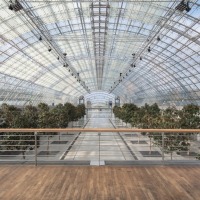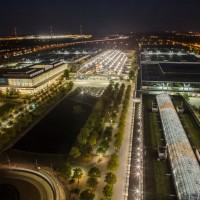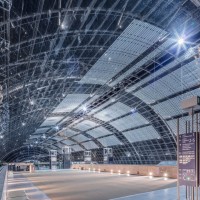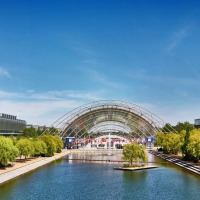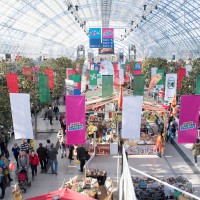The Glass Hall's Architectural Highlights

Pioneering 19th-century architecture has been reinterpreted with a contemporary twist in the construction of the Glass Hall. Spanning an area of almost two hectares, the hall serves as a striking focal point for the Exhibition Centre, while its inviting sense of space reflects the Leipzig Trade Fair's exhibitor and visitor-friendly atmosphere. The Glass Hall, a symbol of the modern business world, thus offers the perfect backdrop to special events.
The dome extends above the central entrance hall. Glass bridges with a flattened oval cross-section lead from here to the exhibition halls. One-of-a-kind in Europe, the steel and glass construction marries aesthetics and comfort with functionality for trade fair operations. In particular, the separation of the exhibition and entrance levels gives the site a clear, compact structure. Stairs and escalators in the side areas lead to bridges connecting the exhibition halls.
Architectural Significance
The building's curved construction is a technical masterpiece. While ordinary float glass acquires a greenish tint over time, the 6,546 panes of special custom-engineered glass in the Glass Hall ensure a clear view. So it still feels alfresco, despite the 20-millimetre-thick glass dome.
The Glass Hall was designed by Hamburg architects from Gerkan, Marg & Partner . The building was not only modelled on and inspired by magnificent crystal palaces, such as the legendary "Crystal Palace" designed by Joseph Paxton for the 1851 World's Fair in London, but also by the monumental domed hall of Leipzig's main railway station with its enormous glass roof. You can, for example, see influences from Leipzig main station's long platform halls in the barrel-vaulted glass roof of the exhibition halls.
The design of the entrance architecture and the variable room concept was entrusted to the London star architect Ian Ritchie . The Briton was also involved in the construction of the glass pyramid at the Louvre in Paris. The interior of the Glass Hall is dominated by natural stone and wood. Rows of English oaks and olive trees in the eastern part of the hall are reminiscent of palm gardens of the 19th century. The slats and openings in the apex of the hall, as well as the water sprinkling from the outside and underfloor heating in winter, provide air conditioning and maintain an evergreen magnolia grove. So you can enjoy the Mediterranean atmosphere of the Glass Hall all year round.

